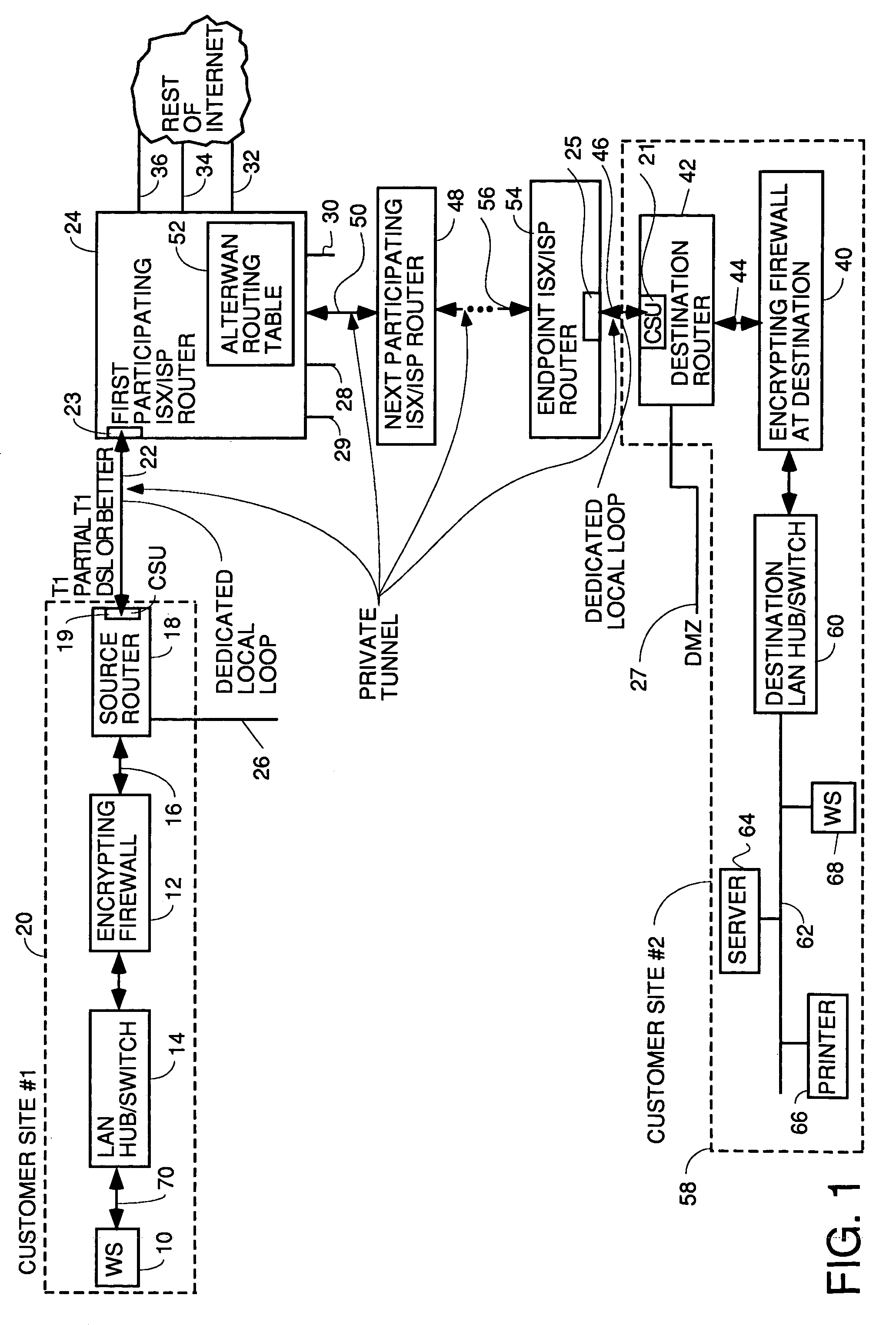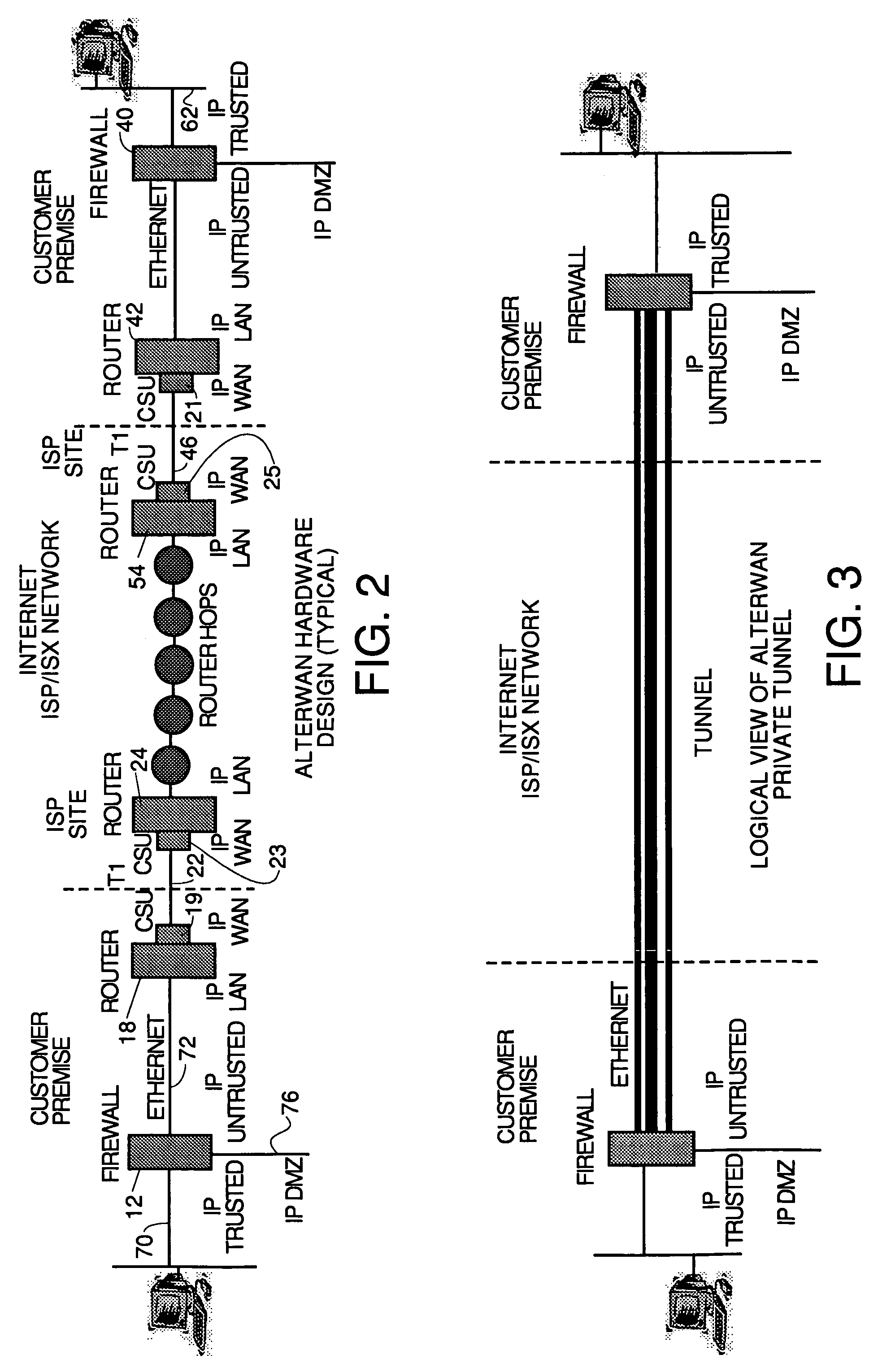Wide area network using internet with quality of service
a wide area network and quality technology, applied in data switching networks, instruments, program control, etc., can solve the problems of limited bandwidth, insufficient bandwidth, and inability to share computer resources cost-effectively, and achieve the effect of large savings in telco charges and sufficient bandwidth
- Summary
- Abstract
- Description
- Claims
- Application Information
AI Technical Summary
Benefits of technology
Problems solved by technology
Method used
Image
Examples
Embodiment Construction
[0036]Typically 60–80% of wide area network costs over a five year period are recurring telephone company charges for their frame relay and point-to-point networking services. These charges break down into: local loop charges to have the connection; a distance charge depending upon the distances between nodes; and, a bandwidth charge for the minimum bandwidth the customer specifies. These costs can typically be drastically reduced by using the internet as a WAN backbone, but only if the latency and other quality of service problems that have plagued prior art attempts can be solved. These costs can be drastically reduced over frame relay and point-to-point networks even if extra costs of crossing telephone company boundaries are not incurred. The AlterWAN™ network of the invention does not have any telephone company boundary problems to overcome.
[0037]Referring to FIG. 1, there is shown a block diagram of a wide area network species within the genus of the wide area networks using t...
PUM
 Login to View More
Login to View More Abstract
Description
Claims
Application Information
 Login to View More
Login to View More - R&D
- Intellectual Property
- Life Sciences
- Materials
- Tech Scout
- Unparalleled Data Quality
- Higher Quality Content
- 60% Fewer Hallucinations
Browse by: Latest US Patents, China's latest patents, Technical Efficacy Thesaurus, Application Domain, Technology Topic, Popular Technical Reports.
© 2025 PatSnap. All rights reserved.Legal|Privacy policy|Modern Slavery Act Transparency Statement|Sitemap|About US| Contact US: help@patsnap.com



